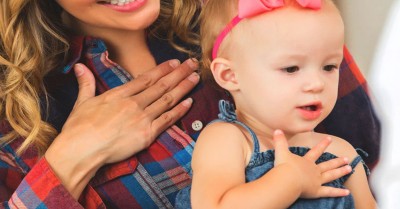Should I teach my baby Sign Language
The short answer to the first question here is ‘No’…Sign Language is not something we SHOULD be teaching our babies or young toddlers. The long answer is a tad more complex. Using natural gestures to accompany what you say when communicating with your child WILL help him or her to understand language more readily. Modelling such gestures may also assist your little one to start communicating earlier than if you only modelled spoken words.
For those children who are late to acquire spoken language, the use of more of these natural gestures and sometimes the introduction Key Word Sign can be of enormous benefit.
What is Key Word Sign?
Key Word Sign adds signs to spoken english. In Australia, we use signs from the Deaf community’s sign language called Auslan. Key Word Sign can be used to support children to understand language and can also help them to get their message across to others more successfully. We say the full sentence and sign just the key words using Auslan signs https://auslan.org.au/
What is Makaton
Key Word Sign was formerly known a Makaton. Sometimes these terms are still interchanged in our community but it is important to know that if you are teaching Key Word Sign to children in Australia, that you draw upon the signs of Auslan. Makaton was originally derived from British Sign Language so it can be very easy to get confused. The last thing we want is for Speech Pathologists, Parents/Carers and Educators teaching different signs for the same word. To keep consistent, it is best to keep the lines of communication open so that all working the child know which signs are being taught and that we borrow the signs from Auslan.
What Signs should I Teach my Child?
The answer to this one is pretty clear…whichever signs your child needs in order to communicate effectively with others. So often I see ‘finished’ and ‘toilet’ as the only signs being targeted. How functional are these are words we need to communicate to others? Sure…we need to understand them but if we are wanting to teach our children signs to communicate with others, there are far more useful words to start with. We will often recommend ‘Core’ words. These are words that can be used across various situations with different people. How often do you need to use ‘colour’ words when communicating to others versus a Core word such as WANT, MORE, GO, NO, LOOK, GET, COME, and HELP? Sit down with your child’s team and look at the reasons why your child is communicating and how? Where are the gaps? What might be causing frustration? Could you perhaps teach a simple sign for those moments?
How Do I Teach Key Word Signs?
Always Say and Sign simultaneously. Slow your speech rate down. Get face to face with your child to maximise […]


